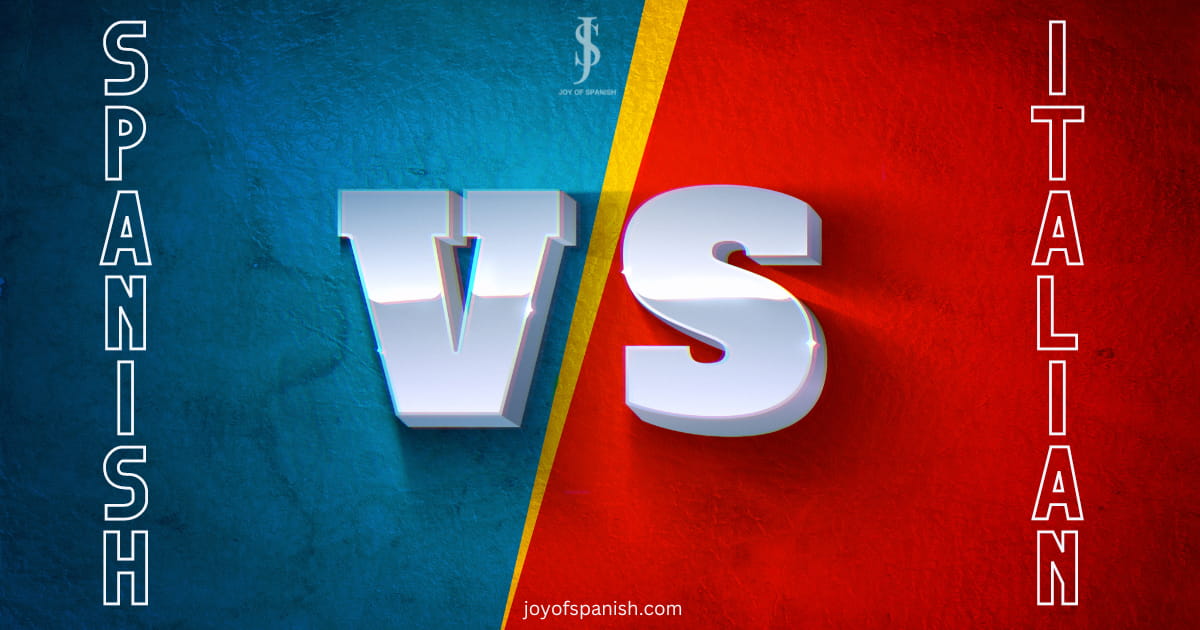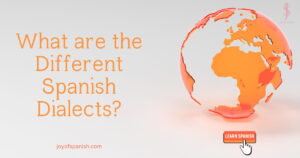The globalized world has made learning languages increasingly important. Today, there are many great foreign language choices. But picking the one that suits you best can be thrilling yet challenging.
After weighing your various options, you may pick between Spanish and Italian.
This is a logical possibility since both are popular among new learners on the fence. Both are beautiful and useful for varied reasons and goals. But selecting a particular one isn’t simple.
You may have many questions in your mind.
For example, which is easier to learn and more widely spoken? Is Italian or Spanish the language of the future? Which one is better and offers more promising career opportunities?
You have come to the right place if you are still trying to decide which one to favor and need solid motivations.
To simplify things, I have compiled a list you should weigh when debating which European language to study next — Italian or Spanish.
Now is the time to get started!
Table of Contents
Should You learn Spanish or Italian? — 5 factors
Spanish and Italian are the world’s most influential and well-known Romance languages.
These two languages have a rich cultural and historical legacy.
As a result, they have played a notable role in shaping the modern world as we know it. Today, they extensively impact global business and diplomacy.
But how do you decide which one is best for you? This question has no definitive answer. People learn different languages based on their goals, likes, and motivations.
When deciding between Spanish and Italian, it is a must to assess various aspects. It can help you make an informed choice based on your needs and interests.
Here are some key elements you should consider when comparing Spanish vs. Italian.
This includes, but is not limited to, interest, objectives, and geographical location. The job, business prospects, the cultural and linguistic context also matter.
Let’s begin!
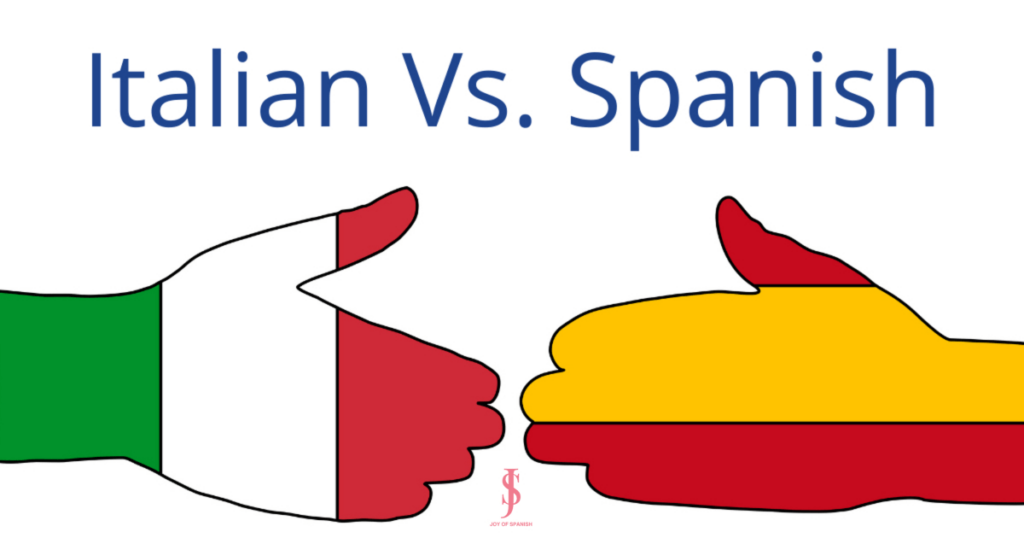
1. Number of speakers & where is it spoken?
Spanish has a notable edge if you aim to learn a widely spoken language. This could be the better choice between the two.
With over 500 million Spanish speakers globally, it is the third most spoken after Mandarin Chinese and Hindi in terms of native speakers. It is also the fourth most commonly spoken language in the globe.
It is the official language of over 20 nations. This includes Argentina, Mexico, Spain, and most countries in Central and South America except Brazil.
As an outcome, it is more widely spoken globally. The Spanish language is useful for those interested in travel or business.
Spanish is also the second most common language in the United States. It is popular among many Americans, primarily in the southern states.
In contrast, Italian isn’t as widespread as Spanish.
With over 70 million speakers, Italian is the official language in Italy, San Marino, Switzerland, and Vatican City. It is also spoken in other parts of Europe but is not widely used.
In short, Spanish is a better choice if you plan to learn a more commonly spoken tongue.
2. Personal interest and purpose
Personal interests and reasons play a vital role in choosing a particular language.
Honestly, you don’t scream at the ceiling when you wake up. Hi, I’m learning Spanish today!
The same is true for you; people learn languages because they find them appealing. Besides, they are often drawn to it because they like its sound, the related culture, and the prospects.
Learning a language you love is the most effective way to maintain motivation. You can also achieve high language competence.
For example, learning Spanish would be great if you are interested in Hispanic countries’ culture, history, and customs.
This makes Spanish a valuable language for trips and trade. It makes it easy to speak with Spanish-speaking communities in many countries.
On the other hand, there are many reasons to learn Italian. This would be a superb choice if you are interested in Italian culture. From tradition and history to art and fashion, there are many incentives.
It is important to note that these are only limited perspectives. What you find attractive might not appeal to someone else.

3. The Cultural Aspects
The third factor to ponder is the cultural and linguistic context.
Spanish has a long history and a rich cultural heritage. This is one of the world’s most crucial Romance languages.
Spanish came from Latin. It shares many semantic and cultural features with other Romance language groups. French and Portuguese are other examples.
Italian has a unique cultural and linguistic context. Italian is also a Romance language. But it is distinct from Spanish and other languages of the family group.
Italian is one of the world’s most beautiful and melodious languages. It is also the language of art, literature, and music. Further, it is known for its rich cultural legacy and contributions to the arts.
This can also make travel more enjoyable. It allows deeper engagement with local customs and fosters contact with people globally.
Are you interested in the culture or history of Spain, Latin America, or Italy? That is an excellent reason to choose one language over the other.
4. Difficulty level — Which is easier to learn?
In relative terms, learning Italian or Spanish is easy for English speakers. They share many resemblances in grammar and vocabulary with English.
The ease or difficulty of learning either language also relies on individual factors. For instance, learning talent, motivation, study habits, a person’s background, and experience.
Spanish is often more straightforward for English speakers. It has a more simplified grammar system and articulation, like English.
Spanish and Italian have many similarities regarding grammar, words, pronunciation, and sentence structure. For example, both use inflection to convey meaning and have a subject-verb-object (SVO) sentence format.
Suppose you speak a Romance language like French, Portuguese, or Romanian. Then, it is easier to learn Italian because of many likenesses.
Spanish shares more closeness with the Ibero-Romance language group. For example, Portuguese.
Yet, there are also several differences between the two. E.g., Spanish has a more uncomplicated pronunciation but a more rhythmic and mixed accent.
In contrast, Italian has a more complex sound that can be hard for non-native speakers to master.
Yet, it is known for its musicality.
Italian also has a more complex grammar system. It has more verb conjugations, gender, and tricky pronunciation. This makes it a more challenging language to learn.
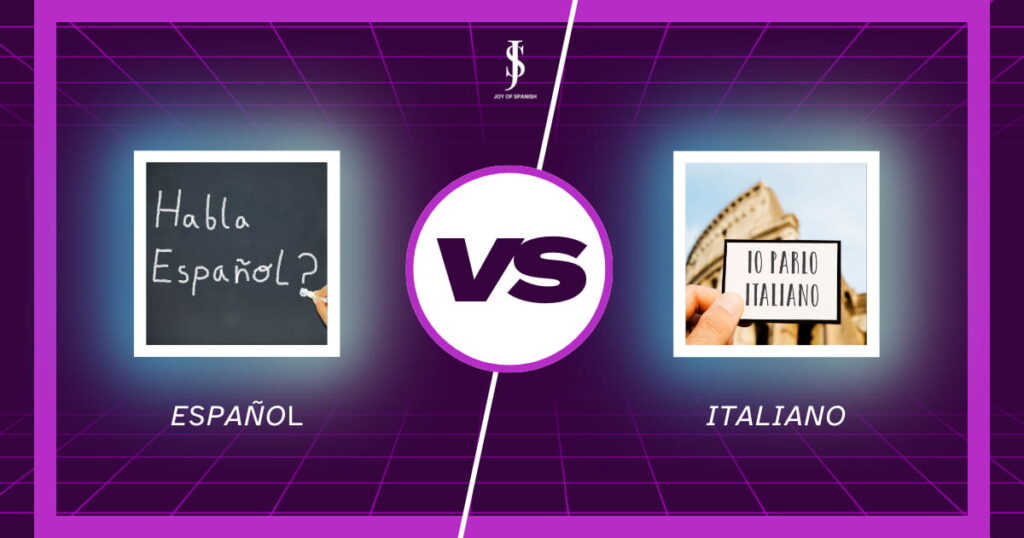
Resources to learn Italian and Spanish
Many resources are available for language learners. Having ample resources and support can vastly aid your language learning journey.
This includes language programs and learning communities for both Spanish and Italian. Plus, you can try apps to practice Spanish and Italian, audio and video lessons, books, etc.
There are also various exchange and immersion programs.
Spanish and Italian are widely taught in schools. This makes studying and gaining fluency easier for students. Here are some options to learn Spanish or Italian.
- Language learning apps (Duolingo, Babbel, Busuu, etc.)
- Podcasts to help you enhance Spanish or Italian
- Online courses and websites (FluentU, SpanishDict, ItalianPod101)
- Textbooks and study guides (e.g., “Spanish for Dummies,” “Italian for Dummies.”)
- Tutors or language classes (online or in-person)
- Language-learning software (e.g., Pimsleur, Lingopie Spanish, Rosetta Stone)
- Immersion programs (study abroad, homestays with native speakers)
- Language exchange programs (e.g., HelloTalk, Tandem, etc.)
- Media like videos, TV shows, and watching films to learn Spanish or Italian.
5. Career opportunities after learning Italian or Spanish
Learning Italian or Spanish can open up various career choices and job chances in many industries. But your career goals and long-term plans will decide which path you take.
Does IT, international business, import-export, education, healthcare, finance, law, and marketing interest you? Then, Spanish as a career should appeal to you the most.
Spanish is a career asset if you want to work in a vast area of Central and South America.
Italy is also known for its fashion industry, chemicals, textiles, wine, food processing, and tourism. There are many benefits to learning Italian.
Learning Italian can give you access to fashion shows, designers, wine, food, and industry events.
Both Spanish and Italian languages offer many career options. But Spanish has the edge since it has vast employment possibilities.
Both languages are in high demand globally, making them valuable assets for job seekers. Here are a few examples of careers that can benefit from proficiency in Spanish and Italian:
- Customer Service: Companies with a global presence often need multilingual customer support. Spanish and Italian speakers can work as bilingual customer service representatives. It can help clients from Spanish and Italian-speaking countries.
- Translation and Interpretation: translation jobs for Spanish and Italian are in high demand. This is true in the medicine, law, and technology industries.
- Hospitality: Spanish and Italian skills can be precious in the travel and hospitality industries. Here, it helps the interaction between guests and staff.
- Business: Spanish and Italian are both helpful in international business. This makes them valuable assets for those seeking trade, finance, and import/export work.
- Teaching and Tutoring: Both languages also lead to jobs in education. You can teach and apply for tutoring positions. Today, one can also teach remotely other than in the physical classroom setup.
Things to ask while picking between Spanish and Italian
- Purpose: Why do you want to learn a language? What specific goals do you have?
- Relevance: Which language is more relevant to your personal, academic, or professional goals?
- Personal Goals: Reflect on your individual goals. Are you learning for travel, work, cultural parts, or personal joy? Understanding your motivation can help guide your decision.
- Difficulty: How difficult are the languages to learn? How much time and effort are you willing to dedicate?
- Availability of Resources: Are there enough resources in your preferred language? Like books, classes, tutors, and good podcasts to learn Spanish or Italian?
- Cost: Is there a cost associated with learning the language? Are you ready to invest the time and money needed?
- Enjoyment: Do you enjoy learning and speaking the language or find the process boring?
- Future prospects: How likely is it that the language will be helpful for you in the future? And what are the potential benefits of being proficient in it?
- Mutual intelligibility: How identical or different are these two languages? To what extent can you understand one if you know the other?
- Similarities and differences: What are the cultural, historical, and linguistic similarities and differences? Which aligns more with your interests and values?
- Speaking opportunities: In which location and with whom will you have more chances to talk about the language?
Final thought (Italian vs. Spanish)
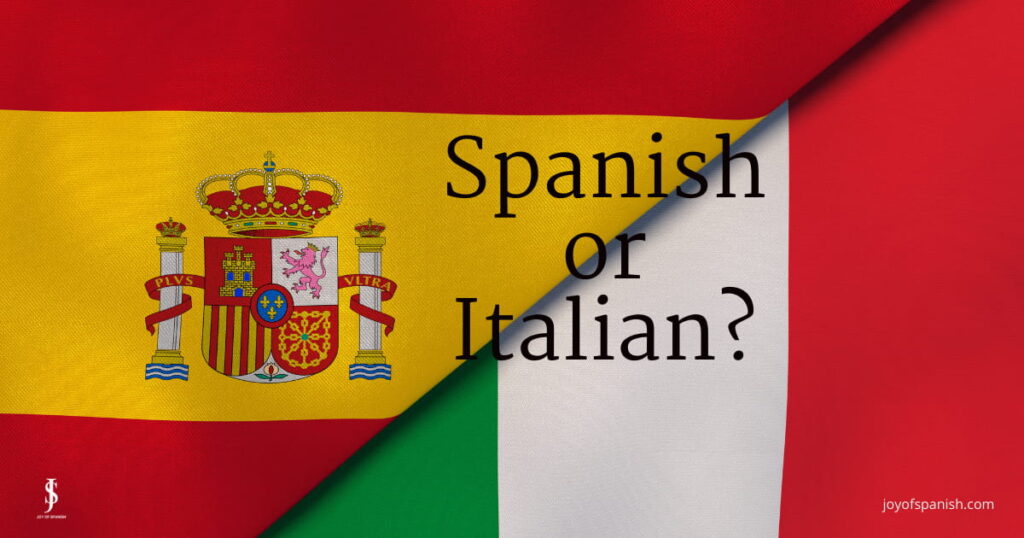
In terms of benefits, learning a language has an array of personal, academic, and professional help.
For example, you can improve cognitive skills like memory, problem-solving, and critical thinking. It also makes you more competitive in a global job market and enhances prospects.
Learning a second language can help to increase self-esteem and self-confidence. Overall, learning a second language can positively affect one’s life.
In conclusion, both languages have much to offer. They are worth learning for those interested in expanding their cultural and linguistic horizons.
Learning Spanish or Italian will broaden your perspective regardless of your chosen language. It can deepen your appreciation of the world around you.
If you’re still unsure, start with the basics of both languages and see which one resonates with you more than you progress. Many free resources are available online, so begin without committing to a paid course.
You can decide depending on your plans, career goals, interests, and inspiration. Yet, it will help if you take your decision on this principle.
LanguageNext offers offline and online Spanish courses with certification at various levels. All our programs are designed per the international Spanish proficiency test.
I can help you if you have questions. Share in the comments below.
